Ways to shelter strawberries for the winter
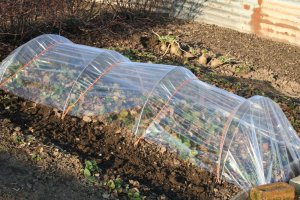 In popularity among gardeners, strawberries are perhaps ahead of all berries. It pleases us one of the first, some varieties ripen in late May. It has excellent taste and wonderful aroma. Therefore, it is used in many culinary products, preservation, frozen. The harvest of the next year largely depends on a successful wintering. Therefore, at the end of the garden season, gardeners in different parts of the country are thinking about how to cover strawberries for the winter.
In popularity among gardeners, strawberries are perhaps ahead of all berries. It pleases us one of the first, some varieties ripen in late May. It has excellent taste and wonderful aroma. Therefore, it is used in many culinary products, preservation, frozen. The harvest of the next year largely depends on a successful wintering. Therefore, at the end of the garden season, gardeners in different parts of the country are thinking about how to cover strawberries for the winter.
Content
Features wintering strawberries
Most of the varieties of berries tolerate winter well, the main thing is that there is snow. If there is a snow blanket (at least 30 cm), then in a relatively temperate climate, nothing is threatened.
[sc name = "info-dashed" text = "The biggest danger for garden strawberries is the dry cold wind and lack of snow cover. She is afraid of thawing, which alternates with sharp frosts. Frost below eight degrees is considered critical for the berry. ”]
 The weather in recent years is not stable, often presents us with all sorts of surprises. Therefore, each gardener must decide whether to cover strawberries for the winter. In addition, a lot depends on the region, the specific area.
The weather in recent years is not stable, often presents us with all sorts of surprises. Therefore, each gardener must decide whether to cover strawberries for the winter. In addition, a lot depends on the region, the specific area.
Frost-resistant varieties are excellent in Siberia, the Urals, and the North. On forums, Siberians, for example, boast that they do not cover strawberries and get a stable good harvest. But it should be remembered that winters are snowy in this region.
In addition, the events that take place before shelter are preparations for laying the future harvest. Much depends on the variety of strawberries. In order for it to take root and winter well, it is better to choose varieties that are well adapted specifically in your region.
Warming strawberry beds for the winter will not only protect it from weather surprises, but also prepare it for a smooth entry into the spring, lay the prerequisites for a better crop.
Preparing for insulation
In late summer, strawberries renew their foliage for the third time this season. During this period, the plant accumulates the necessary substances for good fruiting. There is a peduncle laying. Therefore, it is important to help the plant accumulate strength for wintering.
Varieties of ordinary strawberries begin to be prepared for the winter earlier, after-repairing. The main events in the middle lane for training are held at the end of August September.
Important! It is impossible to cover strawberries during this period, as the berry can ripen.
Thinning and updating
A frequently asked question, especially by beginners in growing, is it necessary to harvest strawberry leaves for the winter. No, this is not necessary. Foliage will serve as additional shelter under snow in the winter. But you must remove the mustache, yellowed or diseased leaflets.

It is important to pay attention to the fact that strawberries are divided into types: a long, short, neutral day and a remont.
Winter preparations for the long day strawberries begin at the end of summer, for the neutral - the end of September. That is, when, for the third time, the leaves grew, fruit and vegetative buds took shape (from which the mustache grows).
Updating and dividing a three-year bush
Usually, the bush grows strongly in the third year, after which the yield decreases. Therefore, such bushes are updated and planted in the fall. For this purpose, they dig an old bush. Around the main bush, many lateral shoots with small roots are formed.
The uterine bush is neatly divided, trying to preserve the young horses as much as possible. The roots of the uterine bush are pruned with pruning shears. Thus, we get seedlings for new beds.
Weeding loosening
After the mustache and unnecessary leaves have been removed, they are removed and burned. Tear out all the weeds. Bushes spud. This must be done with extreme caution so as not to damage the roots. A few days before this, you can water the garden well.
Processing and fertilizer
Simultaneously with the earthing up, phosphorus-potassium fertilizers are applied (20 grams per 1 square meter). For this, hilling is carried out twice. After the first time, fertilizer is scattered, the second time they are mixed with the ground. Fertilizer granules will dissolve gradually, and will become a good top dressing by spring. At the same time, they will feed and support the plant in winter.
Some gardeners feed with ash. 2 glasses of ash are bred into a bucket of water, they insist for a couple of hours. Pour 0.5 liters under the bush. Nitrogen-containing fertilizers are not recommended to be applied at all or in very limited quantities, since they can stimulate development and growth, and we need the vegetation period to end.
Step-by-step video:
We warm strawberries for the winter
After the beds are prepared for the winter, do not rush to cover them. This is done when the first frosts pass, and the earth freezes a few centimeters. Previously, shelter can only harm the plant. For example, repair varieties bear fruit almost until the first frost.





In the middle lane
According to the observations of gardeners and scientists, strawberries tolerate winter well in the middle lane, if there is a stable snow cover. Therefore, in these latitudes quite easy shelter. When the ground freezes slightly, the beds are covered with natural materials. For these purposes, trimmed branches of grapes, raspberries, branches of spruce are suitable. Between the rows you can lay felled stalks of corn. This will contribute to additional snow retention.

Another way is deep mulching. Use dry foliage sawdust, peat, burned out humus. The fruitful and vegetative buds of the plant are laid on a small root neck. It is her who needs to try to insulate as much as possible. In the second, third year, the roots of the plant rise slightly and come to the surface, they also need to be covered. It is not recommended to use the foliage of fruit trees, so they can bring diseases into the strawberries. You can use the leaves of walnut, chestnut, needles.
Sawdust
Shelter can also be covered with sawdust for the winter - this is a popular way among gardeners. It is better to use a combined composition, mix sawdust with foliage, add a little humus, peat. Thus, we will cover the pedicel, provide drainage and retain moisture. In the spring, the fertilizer will dissolve and feed the bush, and sawdust will inhibit the growth of weeds.
For northern latitudes, other methods are suitable.
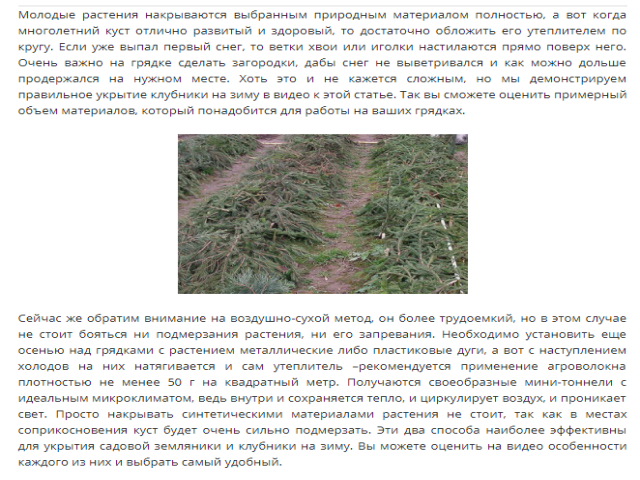
In the Leningrad region
 A feature of strawberry shelter in the Leningrad region is that groundwater is located in many areas close to the surface, the situation is exacerbated in the spring. Therefore, it is better to make bulk beds for strawberries. Moreover, fertilizers are better kept in them, it is easier to insulate them.
A feature of strawberry shelter in the Leningrad region is that groundwater is located in many areas close to the surface, the situation is exacerbated in the spring. Therefore, it is better to make bulk beds for strawberries. Moreover, fertilizers are better kept in them, it is easier to insulate them.
Winter in the first half is characterized by frequent temperature changes, alternating frosts and thaws. Therefore, snow cover can be unstable. The best way for these latitudes would be warming with non-woven covering materials on the frame.
But many use the combined method of sheltering, mulching and shelter with spruce branches. Mulch with the same composition as described above. When the ground freezes slightly, the top of the bed is covered with spruce branches.
Instead of sawdust, peat and humus, you can use needles, and then cover with branches of spruce.
In Transbaikalia
This region is characterized by a long winter period with cold winds and a small amount of snow. The temperature regime ranges from -15 to -37 degrees. That is, conditions that are unfavorable for wintering garden strawberries.
Therefore, the best insulation is air-dry shelter using agrotextile. But many gardeners do as follows, in order not to risk, they dig strawberries. Store in the basement and planted in the spring.
In Siberia
Unlike Transbaikalia, winter in the rest of Siberia is snowy, frosts can drop to -45 degrees. Therefore, even under shelter for the winter of strawberries with a deep cover of snow, in Siberia it can freeze. Even if the bushes leave in the spring, the yield will be worse, the berry is smaller.
They practice mulching of needles and shelter with spruce branches in this region. But since the advent of non-woven materials for insulation, many gardeners use an air-dry shelter with a frame. Since the snow cover can reach a depth of up to 2 meters, the frame is made more reliable, for example, from wooden shields.
Covering material
According to experts, reviews of gardeners, the most reliable way of shelter for wintering strawberries is air-dry insulation using non-woven materials. Unlike the film, it has micropores, that is, it passes air.
The plant, thus, breathes, the risk of rotting is reduced. On the other hand, it retains heat well. Depending on weather conditions, you can use agrofibre of different densities, cover in several layers. After such a wintering, strawberry productivity increases, since garden strawberries experience less stress, wintering in comfortable conditions.
Shelter Sequence:
- carry out preparatory work as described above;
- mulch the bed;
- establish a framework for stretching non-woven material: arcs, shields, building metal mesh, etc.
- when the ground freezes a few centimeters, that is, the first mild frosts pass, they cover it with agrofibre.
Depending on climatic conditions, the optimal type of frame and the density of the nonwoven material are experimentally selected, preferably not less than 50 g per square meter.
There are a lot of ways to cover strawberries for the winter, and everyone chooses the one that is most suitable for their region.

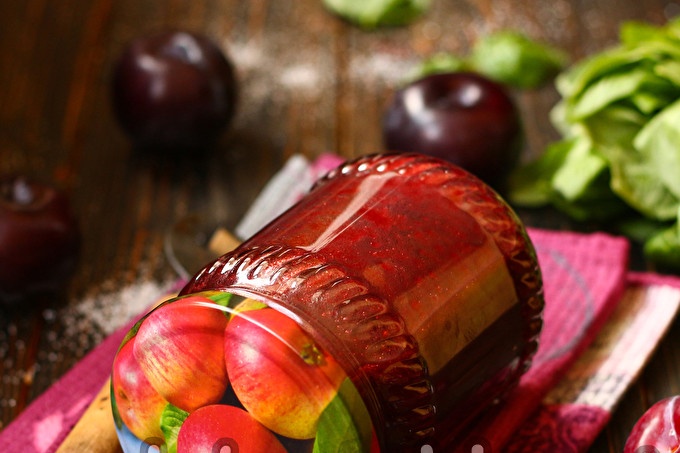
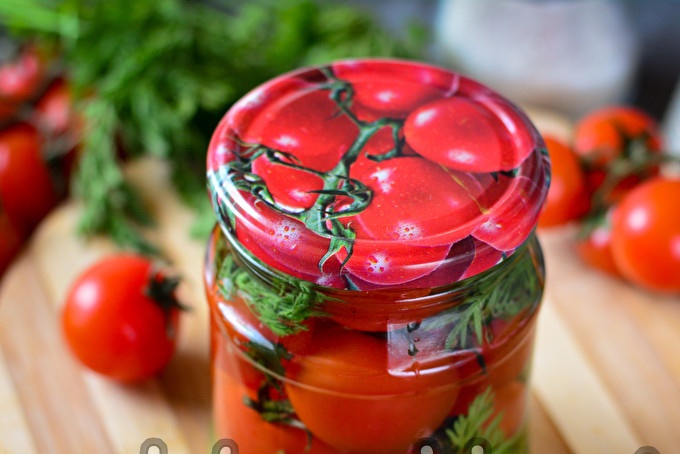
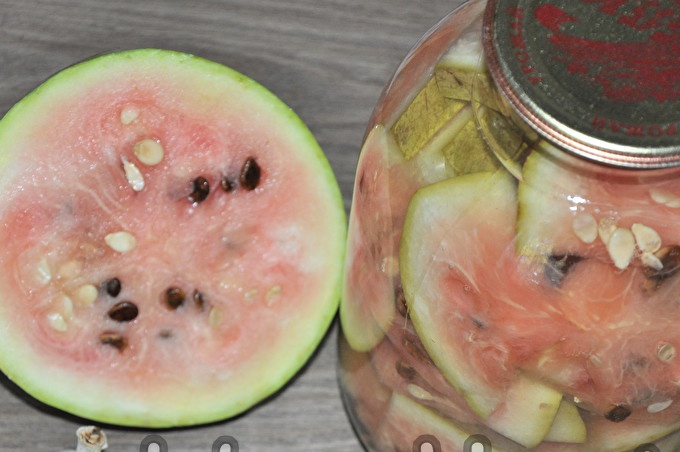
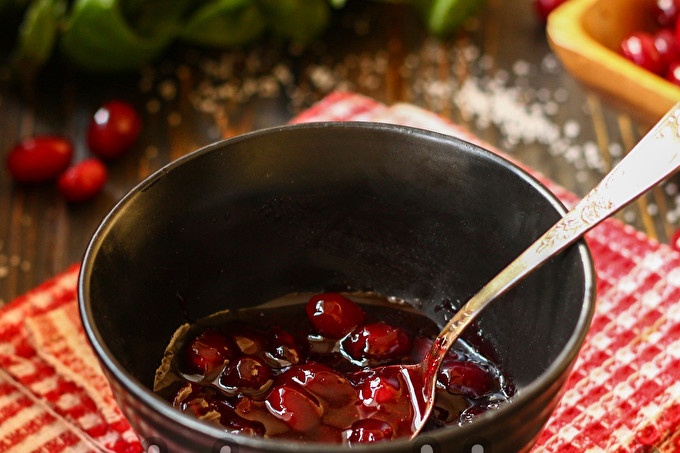 Very tasty and beautiful dogwood jam
Very tasty and beautiful dogwood jam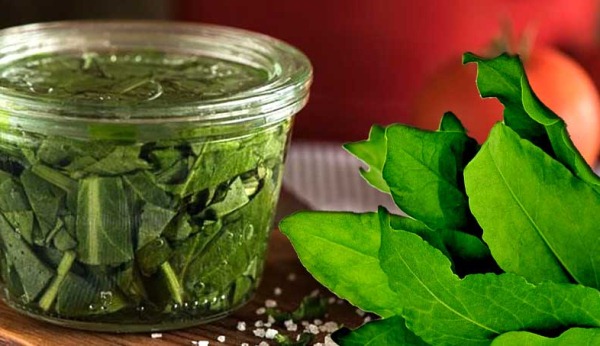 How to preserve sorrel leaves
How to preserve sorrel leaves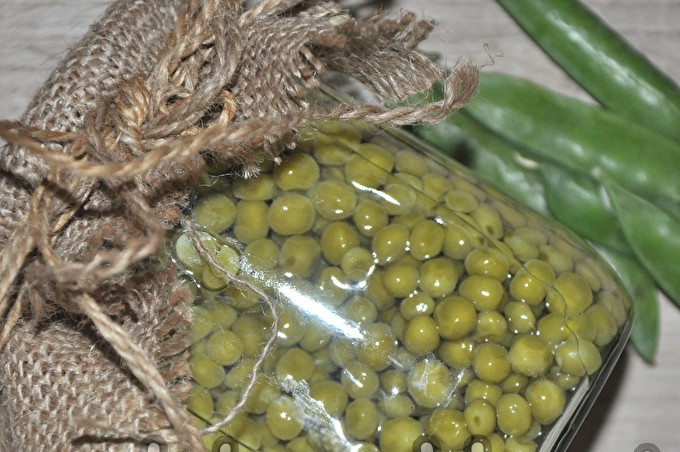 Green peas for winter without sterilization
Green peas for winter without sterilization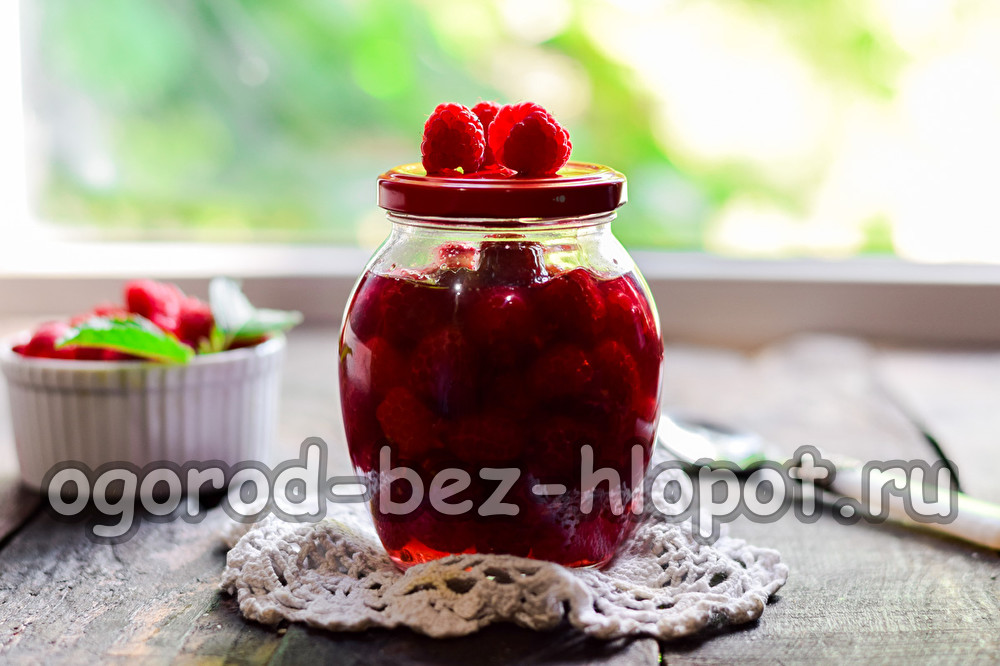 Raspberries in their own juice without sugar
Raspberries in their own juice without sugar